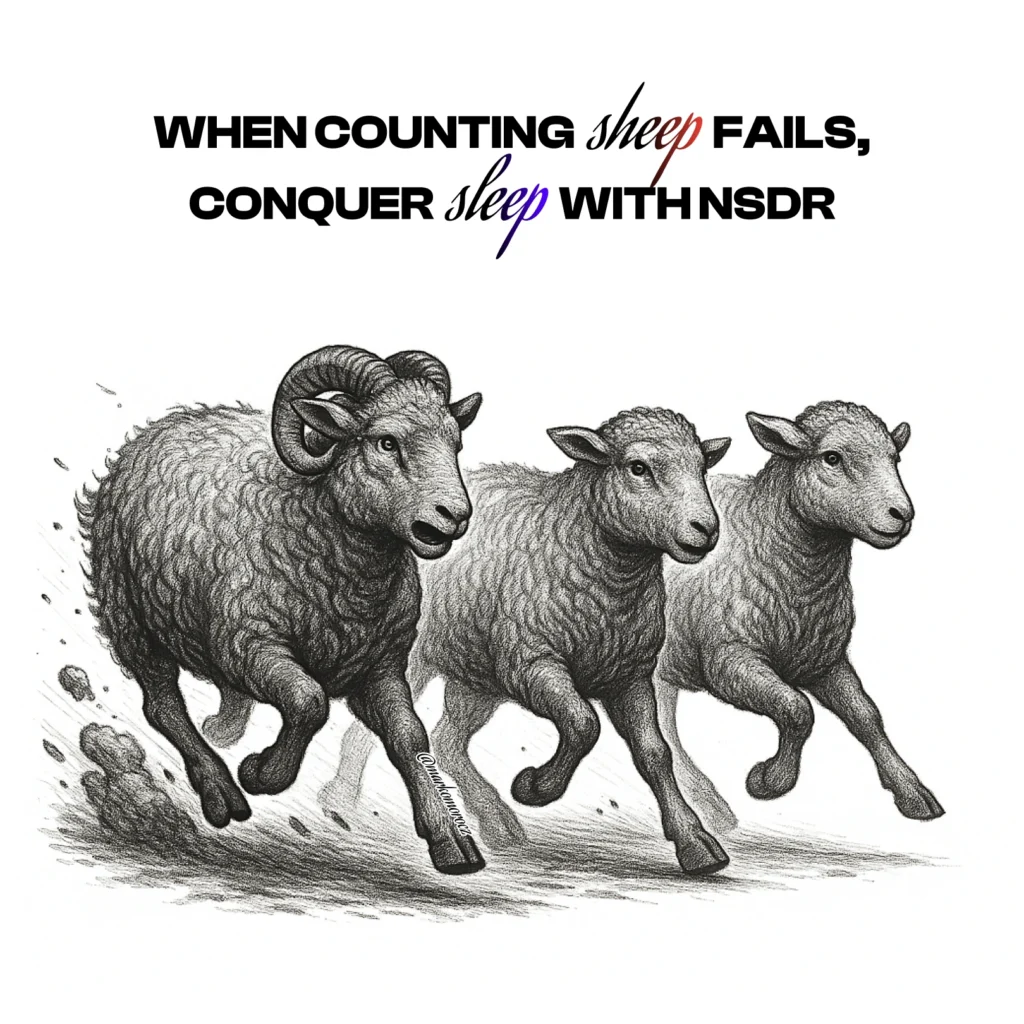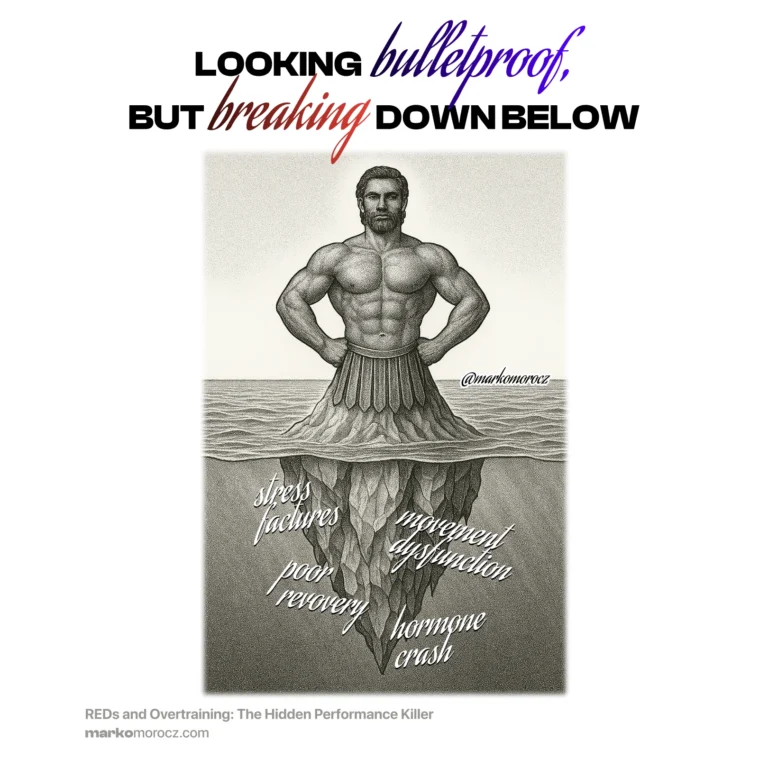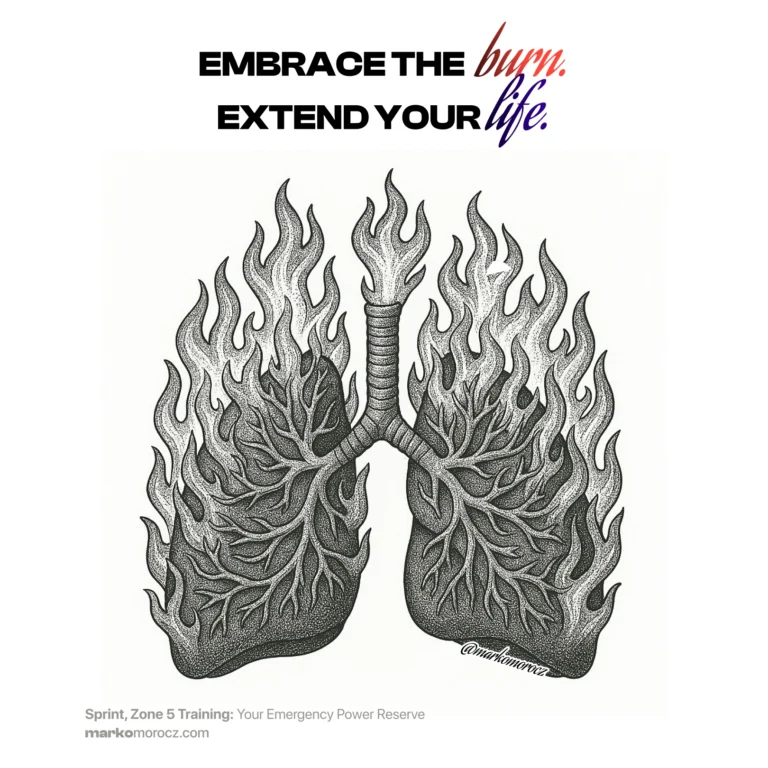NSDR: Transform Your 3AM Anxiety Into Sleep
Ever wake up at 3AM and can’t fall back asleep?
Your mind racing with screaming thoughts?

Been there. Done that. Got the dark circles, brain fog and beta me.
But I discovered a powerful tool that helps 9 out of 10 times. It’s called Non-Sleep Deep Rest (NSDR).
And it saved my nights.
What Is NSDR?
NSDR is a term coined by Stanford neuroscientist Dr. Andrew Huberman to describe a state of conscious deep relaxation—one where you’re not quite asleep, but not fully awake either.
Think of it as the middle ground on the sleep-wake spectrum. One where your body powers down while your mind remains dimly aware.
It’s a repackaging of an ancient meditation practice called Yoga Nidra, but without the spiritual part.1 You lie still, follow guided instructions, and one-by-one relax every part of your screaming body.
The result? Deep physiological rest that rivals sleep.
Struggled To Sleep, So I Started Using NSDR
I’ve always been a performance-obsessed guy, but I struggled with sleep.
I remember the joy of waking up at 3 AM. Watching the ceiling for hours. Counting sheep and the seconds I have until the haptic alarm says go.
On those nights, I’d spiral into anxiety about how bad I’d feel the next day. And that anxiety? It only made falling back asleep harder.
Classic anxiety loop. Mind racing, body tense, sleep nowhere to be found.
Then I discovered NSDR.
Now when I wake up, I don’t fight it. I don’t stress. Nah, that’s a lie. I sometimes still stress. But I manage it.
I reach for my bone conductor headphones, and start a 20-minute NSDR session.
I’m usually back asleep before it’s even finished. And if not? I still got incredible rest.
Science Loves NSDR To Fall Back Asleep
This isn’t just feel-good nonsense. NSDR is backed by serious science.
When you practice NSDR, your brain shifts into a unique pattern of electrical activity. Studies using EEG readings show increased theta waves—the slow, rhythmic brain waves associated with deep relaxation and information processing.2
Here’s what happens to your brain and body during practice:
1. Dopamine Boost
PET scan studies show that an hour of Yoga Nidra (similar to NSDR) can increase baseline dopamine levels by up to 65%.3 This boost explains why you feel so refreshed afterward.
2. Parasympathetic Activation
NSDR activates your “rest-and-digest” nervous system while deactivating the “fight-or-flight” response. This drops your heart rate, blood pressure, and cortisol levels—a must for recovery.4
3. Brain Wave Shifts
Your brain transitions from beta waves (active thinking) to alpha waves (relaxed awareness) and theta waves (deep meditation, REM sleep).5 This is when memory consolidation and stress reduction happens.
4. Enhanced Brain Plasticity
Research shows that the deep relaxation state of NSDR can promote neuroplasticity—your brain’s ability to rewire itself.6 This boosts learning and skill development.
Science Loves NSDR For Wellbeing & Longevity
NSDR isn’t just about helping you fall back asleep. Its benefits extend far beyond that.
Sleep Quality
Research has shown that NSDR can significantly improve sleep quality in people with chronic insomnia.7 In one study, patients showed improvements in sleep duration, efficiency, and fewer night awakenings after just two weeks of practice.
Stress Reduction
A 2023 study found NSDR practice reduced blood pressure, pulse rate, respiratory rate, as well as stress and anxiety levels.8 The effect compounds like interest—the more you practice, the greater the benefit.
Cognitive Enhancement
A study by Dr. Wendy Suzuki found that a daily 13-minute NSDR practice led to increased attention, working memory, and recognition memory.9
Recovery From Sleep Loss
While nothing fully replaces sleep, NSDR comes surprisingly close. It gives your body and mind many of the restorative benefits of sleep, making it invaluable for recovering from poor sleep.10
How To Practice NSDR
Ready to try it? Here’s how:
- Set the scene: Choose a quiet space with minimal distractions. Use an eye mask if needed.
- Find a comfortable position: Lie down on your back, arms at your sides, palms up. Make sure you’re comfy and won’t be disturbed.
- Start a guided session: I use Huberman’s 20-minute NSDR recording when I wake up in the middle of the night. But there are many great ones out there.
- Follow the guidance: Listen to the instructions and follow along. Most NSDR protocols guide you through:
- Progressive body relaxation
- Breath awareness
- Sensory perception
- Let go of expectations: It’s fine if you fall asleep! That’s often the goal when using NSDR for insomnia. But even if you stay awake in that twilight state, you’re still getting massive benefits.
When To Use NSDR
NSDR is insanely versatile. I use it most often in these situations:
1. Awakenings: When you wake up at 3AM and can’t fall back asleep, NSDR helps you drift back to sleep or provide rest that’s the next best thing.
2. Afternoon Energy Slumps: That 2-3PM energy crash? A 10-20 minute NSDR session can be more refreshing than a nap, without the grogginess.
3. After Intense Learning: NSDR enhances memory consolidation. Using it after studying or learning a new skill cements that knowledge.11
4. Stress Overload: When you’re overwhelmed and your mind won’t stop racing, NSDR resets your nervous system.
5. Recovery Days: On days when you’re fatigued from poor sleep or intense workouts, NSDR accelerates your recovery. I’ll do one soon after finishing this post exactly because of this.
My NSDR Protocol
Here’s my exact method:
- Keep bone conduction headphones (earbuds fine too) and phone close to my room
- If can’t fall back asleep within 15 minutes, don’t fight it
- Put on headphone and start Huberman’s 20-minute NSDR recording
- Follow instructions without trying to fall asleep
Usually, I’m asleep before it ends. If not, I still feel incredibly refreshed.
The key? Zero pressure to sleep. That removes the anxiety that keeps you awake.
Potential Downsides?
Is NSDR perfect? Not quite.
Some people find the guided meditations distracting. Others might find it difficult to stay awake enough to follow the instructions.
If you have clinical insomnia or sleep disorders, NSDR should complement, not replace, professional treatment.12 Always talk with your doctor.
Also, while NSDR compensates for lost sleep, it’s not a long-term substitute for quality sleep. Use it as a tool, not a crutch.
Take This To Bed
NSDR isn’t a miracle cure. But it’s about as close as you’ll get for those frustrating middle-of-the-night wake-ups.
It’s a zero-cost, scientifically-backed method to either help you fall back asleep or give your brain and body the next best thing.
Try it when counting sheep doesn’t help. Your 3AM self will thank you.
Have a question you can’t sleep about? Comment them below—I’d love to hear your take!
References
- Huberman, A. (2025). ” Guide to NSDR.” Huberman Lab Newsletter. ↩︎
- Zaccaro, A., et al. (2021). “The Consciousness State of Traditional Nidrâ Yoga/Modern Yoga Nidra: Phenomenological Characterization and Preliminary Insights from an EEG Study.” International Journal of Yoga Therapy, 31(1). ↩︎
- Kjaer, T. W., et al. (2002). “Increased dopamine tone during meditation-induced change of consciousness.” Cognitive Brain Research, 13(2), 255-259. ↩︎
- Pandi-Perumal, S.R., et al. (2022). “The Origin and Clinical Relevance of Yoga Nidra.” Sleep and Vigilance, 6(1), 61-84. ↩︎
- Lou, H. C., et al. (1999). “A 15O–H2O PET study of meditation and the resting state of normal consciousness.” Human Brain Mapping, 7(2), 98-105. ↩︎
- Suzuki, W., et al. (2021). “Brief, daily meditation enhances attention, memory, mood, and emotional regulation in non-experienced meditators.” Behavioural Brain Research, 421. ↩︎
- Datta, K., et al. (2021). “Yoga nidra practice shows improvement in sleep in patients with chronic insomnia: A randomized controlled trial.” The National Medical Journal of India. ↩︎
- Sharpe, E., et al. (2023). “A pilot study on effect of yoga-nidra programme on depression, anxiety, and stress among university students.” Journal of Alternative and Complementary Medicine. ↩︎
- Huberman, A. (2024). “Non-Sleep Deep Rest (NSDR).” Stanford University School of Medicine. ↩︎
- Miller, D.J., et al. (2022). “A Validation of Six Wearable Devices for Estimating Sleep, Heart Rate and Heart Rate Variability in Healthy Adults.” Sensors, 22(16), 6317. ↩︎
- Parker, S., et al. (2013). “Defining yoga-nidra: Traditional accounts, physiological research, and future directions.” International Journal of Yoga Therapy, 23(1), 11-16. ↩︎
- Sleep Foundation. (2024). “What Is Non-Sleep Deep Rest (NSDR)?” Sleep Foundation. ↩︎





